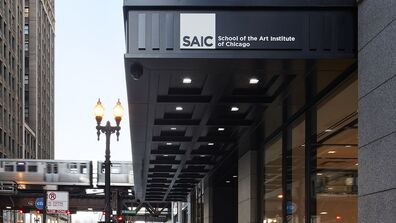
Art Goes Remote

Many people see art and design as solitary fields. We picture artists alone in their studios or hunched over drafting tables. But community has always been essential to the act of creation, so when stay-at-home orders were issued around the world in the spring, many wondered how the art world would adapt. How could educators teach students technique over Zoom? How could artists find an audience when galleries were shuttered?
Artists and designers have long pursued solutions to complex problems, and many of the School of the Art Institute of Chicago’s (SAIC) students, alums, faculty, and staff members saw life under self-quarantine as an opportunity instead of a barrier. They adapted quickly to the challenges posed by the COVID-19 pandemic and found new, innovative ways for their work to thrive. They built communities over Instagram, hosted digital exhibitions, raised funds for their peers, and so much more, proving that art and design will always bring people back together.
Image

Designing a New Virtual World
In March, the pandemic upended life as we knew it, but when SAIC made the unprecedented move to remote learning, Assistant Professor of Art and Technology Studies Kristin McWharter discovered an opportunity for her students to use augmented reality to chart this newly unfamiliar world.
Aptly named, McWharter’s course Breaking Reality normally centers on world building—a broadening of what’s possible in our reality. When the pandemic hit, McWharter and her students had to make a shift. “Together, students from my class and myself pooled ideas about how we could continue working with the conceptual framework of the course, [while] using tools that everyone had access to at home,” McWharter explained. “We broadened our conversation from the nuances of virtual reality to what practices of world building could mean for this moment in time.”
From their collaboration, a final project was born—the students of Breaking Reality set out to design a post-COVID world.
Without access to the School’s virtual reality headsets, the students used a combination of web-based virtual reality, augmented reality, and video production programs to speculate on just one element of this new reality. Yinuo Zhong’s Don’t Panic used video to virtually see the world, despite physical travel restrictions. Avery Williams’s Awaken created an Instagram filter that conjures a post-pandemic world where people are more deeply aware of systemic injustice.
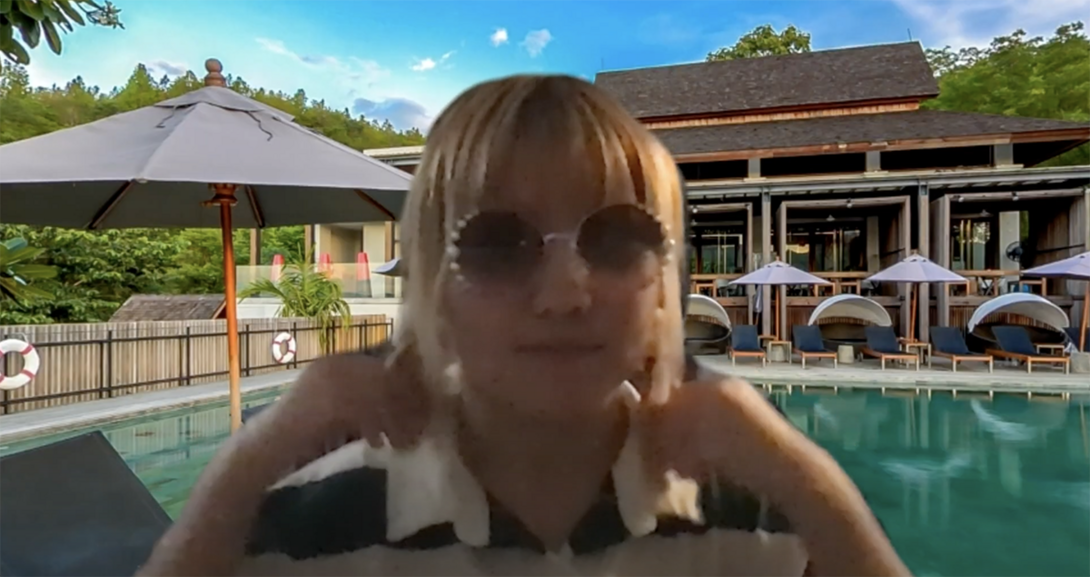
Click to view Yinuo Zhong's Don't Panic.
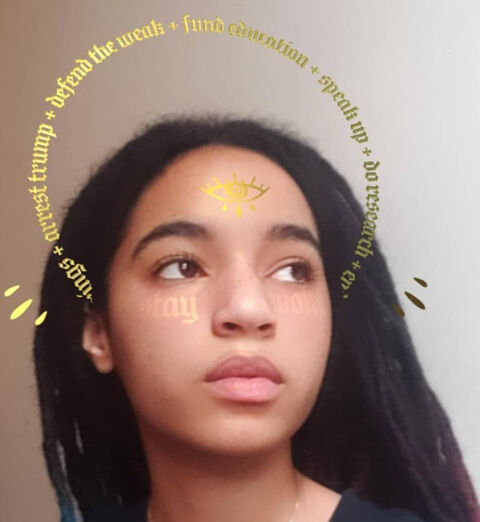
Click to view Avery Williams’s Awaken.
Simply the act of imagining felt powerful to people in a moment of such instability and uncertainty.”
Kristin McWharter
“I was blown away by the work they created,” McWharter said, “and how thoughtfully they were able to conceive of new possibilities during such a challenging moment.”
The students’ final projects were housed in a public online exhibition; however, McWharter took one step further outside of the classroom’s “walls.” In a series of Instagram stories, she created interactive exercises that asked viewers to reimagine their relationship to their environment, including objects, architecture, time, and behavior, just like students had done. For many, McWharter found the process provided comfort. “Simply the act of imagining felt powerful to people in a moment of such instability and uncertainty.”
Image

Concerts in Quarantine
When stay-at-home orders started to go into effect across the country, musicians—fearing for their livelihoods—wondered when they’d be able to play for crowds again. Many began to stream concerts on Instagram, but their reach was limited to existing followers and their only form of payment was the occasional Venmo transfer.
In this moment of crisis, the staff at Experimental Sound Studio (ESS), a Chicago-based nonprofit organization dedicated to artistic evolution and the creative exploration of sound, saw a call to action. “There was this painfully obvious hole,” said Alex Inglizian (BFA 2006), technical director of ESS. “We’ve always provided a platform, an infrastructure, and an audience, and so we began to ask ourselves how we can do that same thing under the current limitations.” Co-founded by Assistant Professor Lou Mallozzi, ESS is now led by Inglizian, Olivia Junell (MA 2016), and Adam Vida. In March, they launched the Quarantine Concerts.
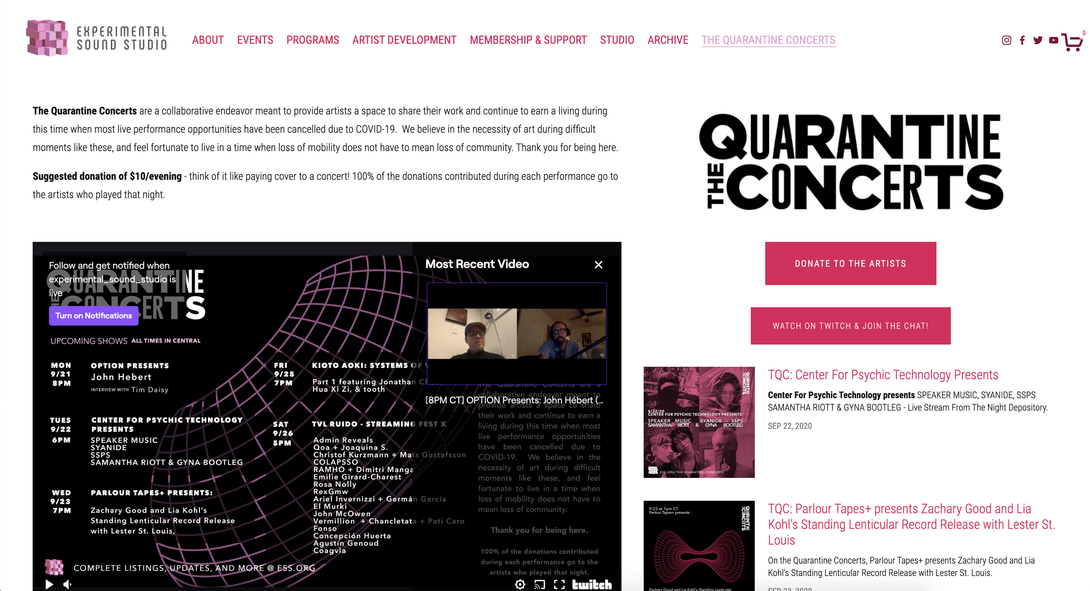
Click to view the Quarantine Concerts lineup.
Hosted on Twitch, the Quarantine Concerts streams musicians performing from their own homes or studios. It was an immediate success. “We started getting floods of requests from artists to play,” Inglizian said. “We built this audience really quickly and, because of this, could pay artists really well. People knew they could tune in and expect a good show.” Artists began to experiment with the form, placing the camera in interesting places—such as the bridge of an upright bass—to give viewers a unique experience. In-person shows at ESS could accommodate a maximum of 40 people, but their streaming shows are attracting hundreds.
To replicate the communal concert experience, ESS hosts chats during shows, so audience members can connect with one another and the musicians in between sets. “The whole thing is this cathartic output for musicians who need to share their work,” Inglizian said. “For the audience it’s the same thing. There’s something so magical about a live show, to be part of a community and watch someone create in real time.”
Image

Community Building on Instagram
Ayesha Singh (MFA 2019) has always been interested in the idea of community. Before she left Delhi to pursue her graduate degree at SAIC, she hosted spaces for creatives to discuss their work and collaborate. When she returned to India after graduating, she knew she wanted to bring people together again. “We have so many artists in Delhi, but have few spaces of interaction, unless you’re at an exhibition opening,” Singh said. She reached out to her network on social media to begin brainstorming ideas. Then, the pandemic happened.
“We started to think more deeply about how we can support artists during this time,” Singh said. After speaking to artists, curators, and other members of the art world, Singh and artist Purvai Rai developed Art Chain India. Initially inspired by the idea of the Artist Support Pledge, Art Chain India is an initiative that builds community through networking and monetary support. Artists post their work on Instagram priced at or under 10,000 rupees (roughly $130) and tag Art Chain India so that there’s an easily searchable listing of works for buyers. Once an artist makes 50,000 rupees from sales, they pledge to spend 10,000 rupees to buy another artist’s work.
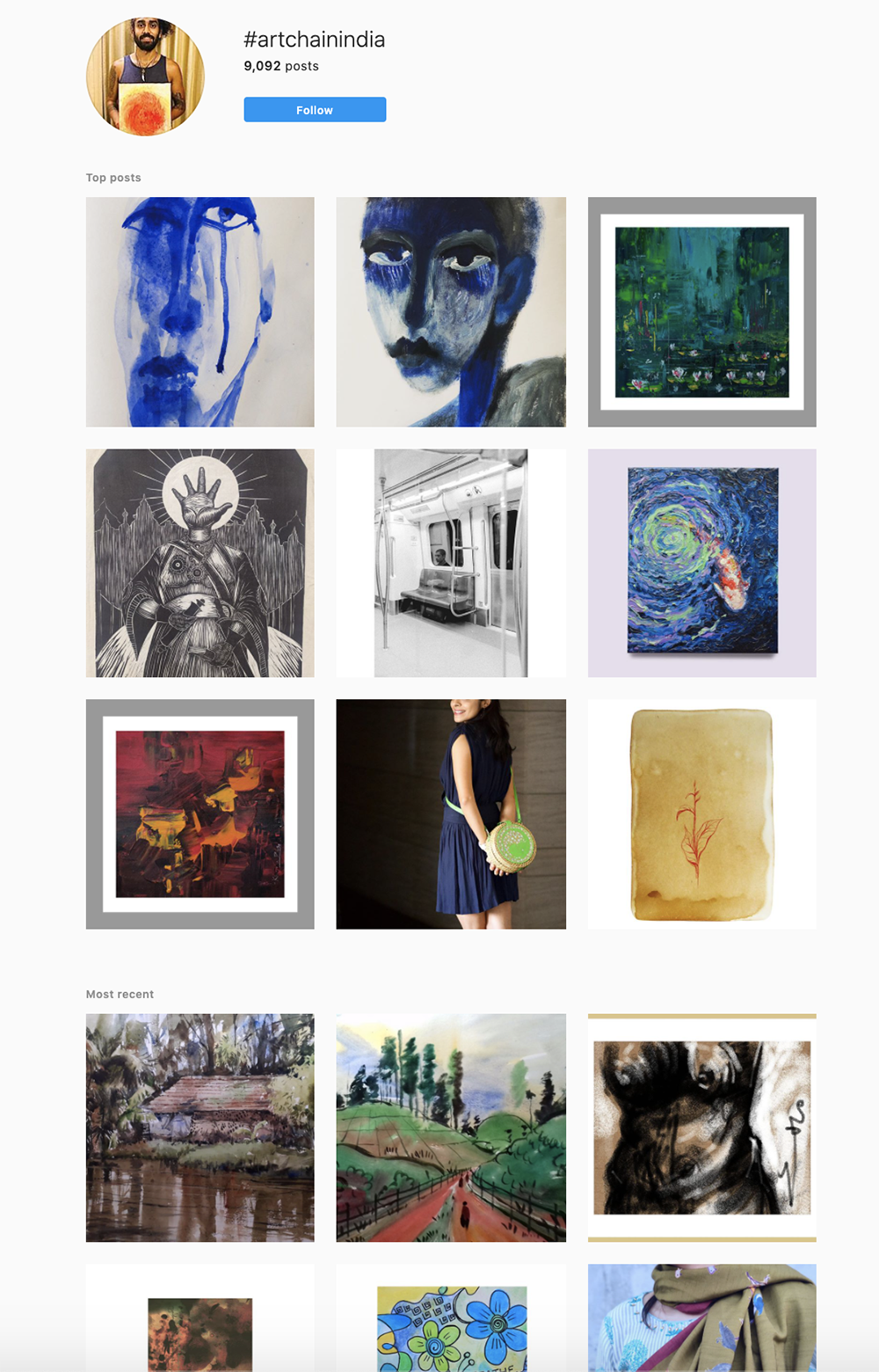
Click to view Art Chain India's artworks for sale.
The first day Art Chain India launched, they sold their first piece. Today, there are more than 9,000 pieces tagged. “The page gave immediate access to local artists because of the ease of the platform and the use of a mix of Hindi and English content. We’re talking about people living in remote villages, in cities, in small towns, including young students in college; many artists who haven’t yet had access to buyers unless they knew someone personally or via a gallery,” Singh said. “Art Chain was able to create a democratic marketplace that has given people the ability to directly communicate with buyers and have a sense of agency and independence.”
Their work didn’t end there. They started getting dozens of direct messages a day with questions about how to list pieces and navigate the art world, so they started to release informational videos. They also began to host free review sessions with prominent artists and curators and launched an opportunities section of their site that lists grants and residencies. “This is usually very hush-hush, information that artists would only share with their friends—but we made it available for anyone to download. Information as such should be available to all,” Singh said. “We’ve gotten so much appreciative, emotional feedback.”
Though Art Chain India was created in response to COVID-19, Singh hopes it will have a life well beyond the pandemic. “This is for every artist,” Singh said. “There’s no curation. We’re not trying to be tastemakers. We hope that this is a useful resource that our peers can benefit from. And there’s still a lot of work to do.”
Image

Broadcasts from Around the World
When the School transitioned to fully remote learning, the crew at ExTV, SAIC’s student-run broadcast organization, knew that their programming would have to change. They relied heavily on campus monitors and the videos that students made using School facilities. One advantage was clear: their medium was now ubiquitous. “Everyone was starting to use video to make up for the long-distance relationship that we’re all in, so we wanted to create programming around that,” said Rain Shanks, the station manager. From this, A???Part was born, a series created specifically to showcase video art in a time of social distance.
That’s a cool characteristic of work made in the time of COVID, that it’s all inside our intimate domestic space. People are being more vulnerable.”
Rain Shanks
The staff quickly pivoted to using digital platforms, showcasing the series on YouTube and using Instagram to promote each episode. Though they were initially concerned about submissions, students were eager for an outlet. “We got so much interesting stuff,” said Shanks. Storm Butti's Flightoid imagines the pandemic from the perspective of a bird. Jiayun Li’s Isolation Diary investigates the changes in urban spaces during quarantine. Submissions were curated by Shanks, Digital Media Manager Emily Martin, and Production Manager Chanina Katz. “That’s a cool characteristic of work made in the time of COVID, that it’s all inside our intimate domestic space,” said Shanks. “People are being more vulnerable. When you’re so stuck inside, and there’s not a lot that you can access, you really have to look inwards.”
Engagement has been strong, and the crew are committed to producing new episodes as long as students keep submitting work. “The purpose of ExTV is to showcase whatever people are making,” said Shanks. “And that feels good, to serve the community in this way.”
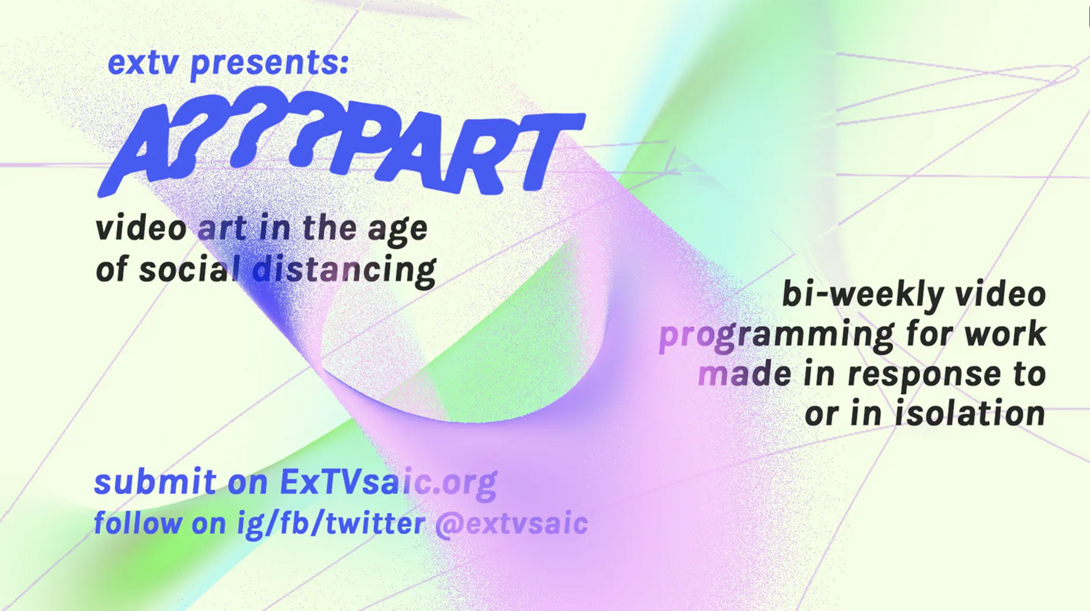
Click to view all four episodes of A???PART.
